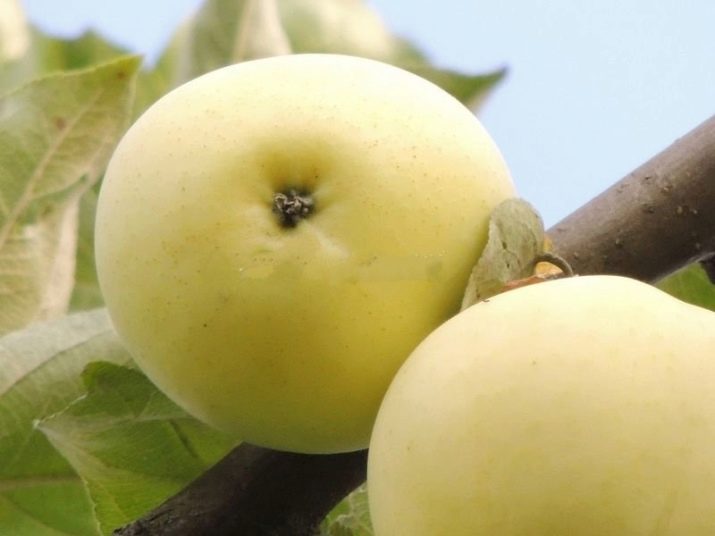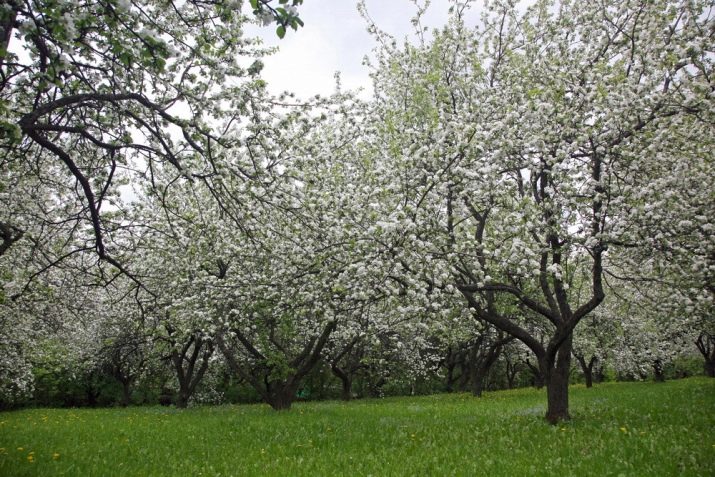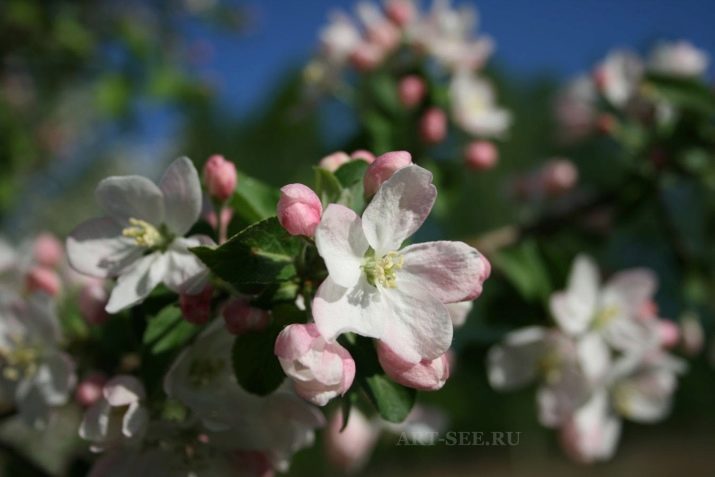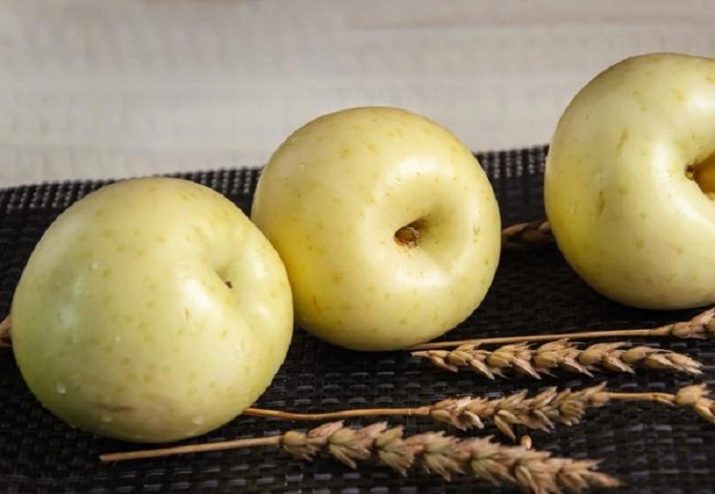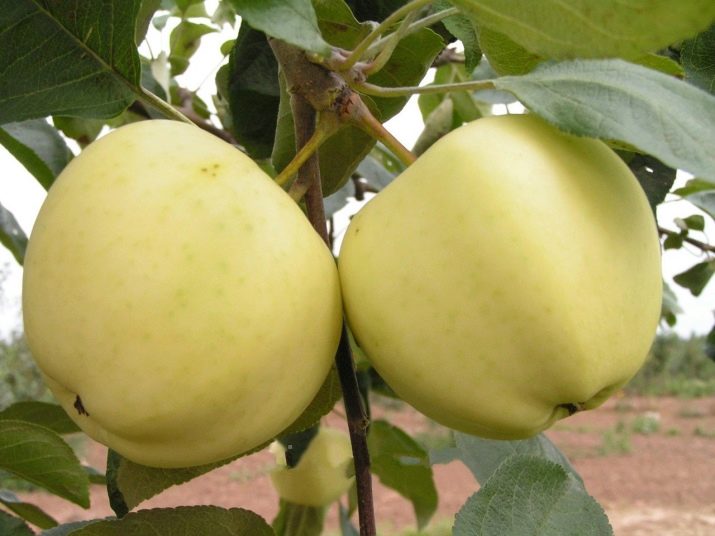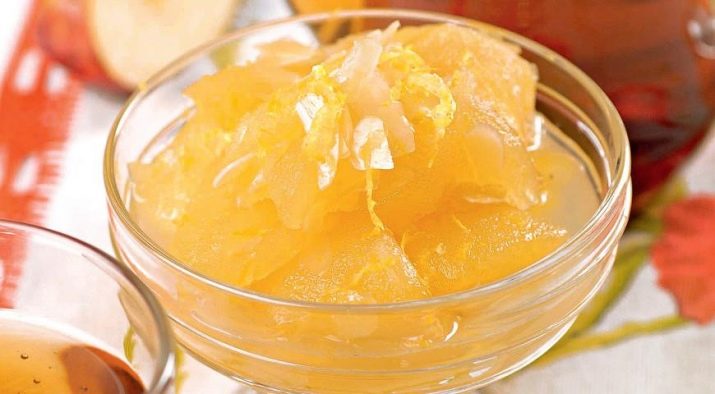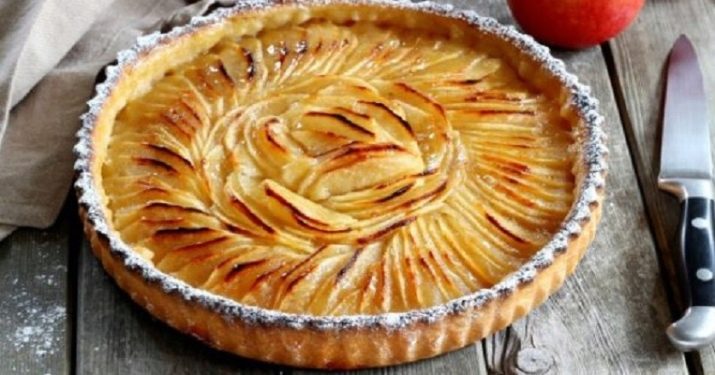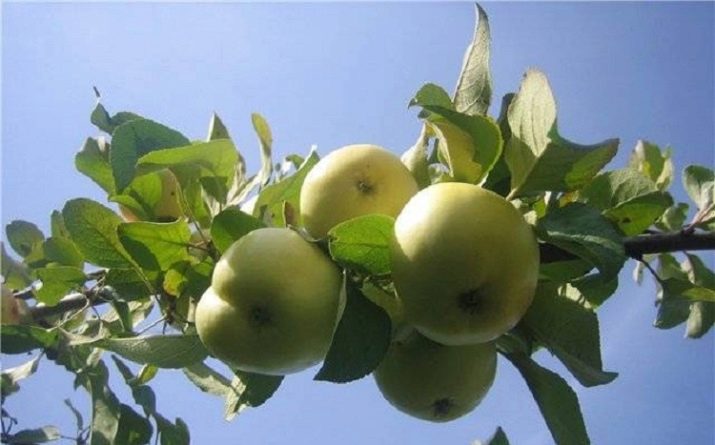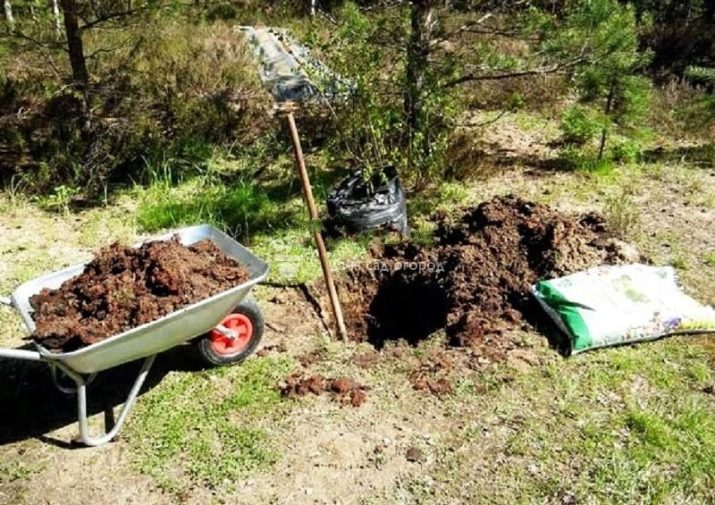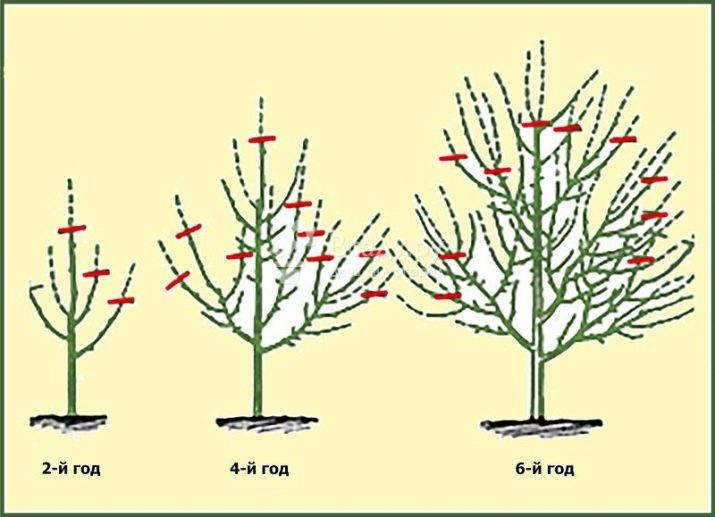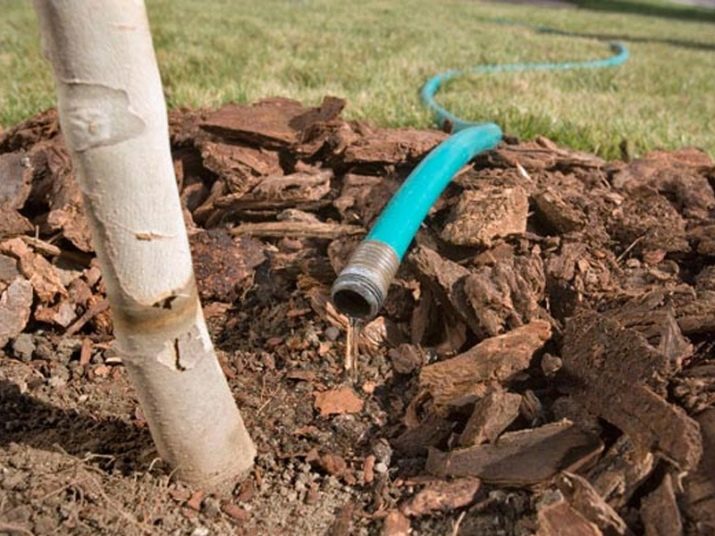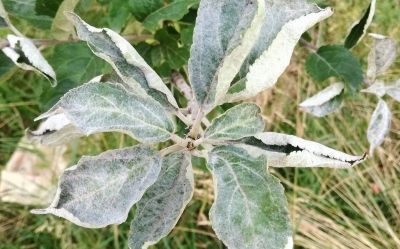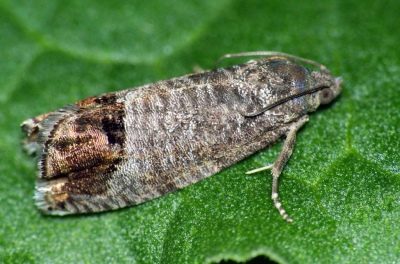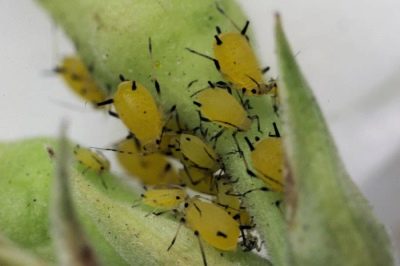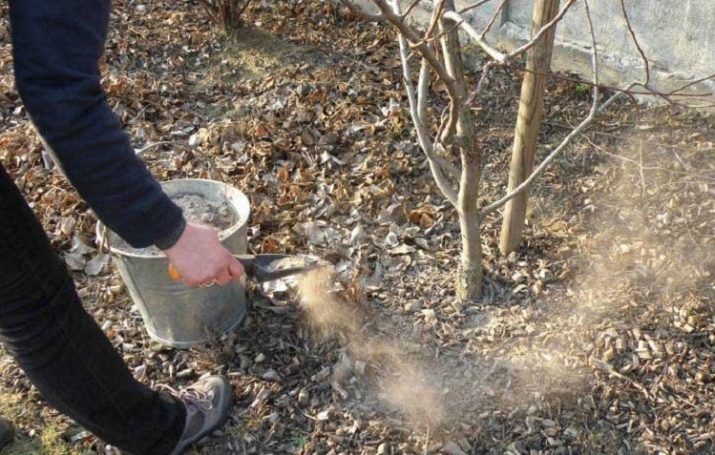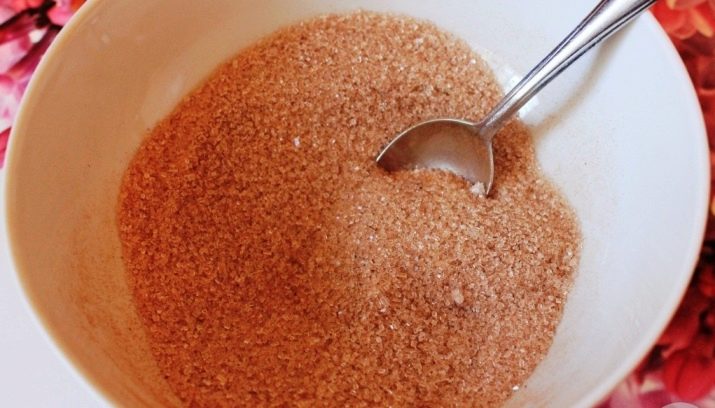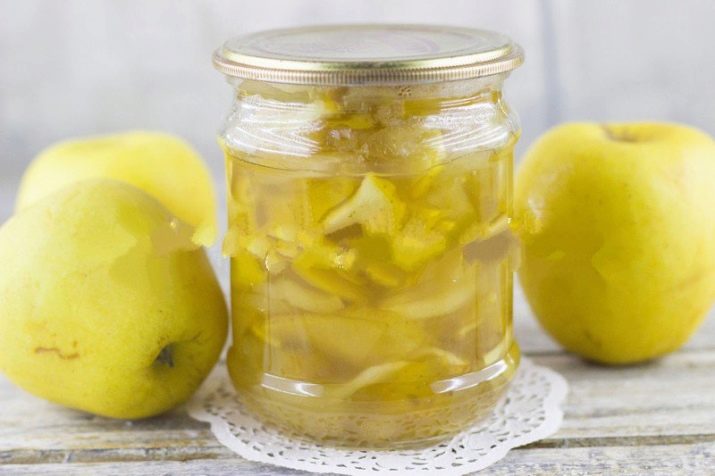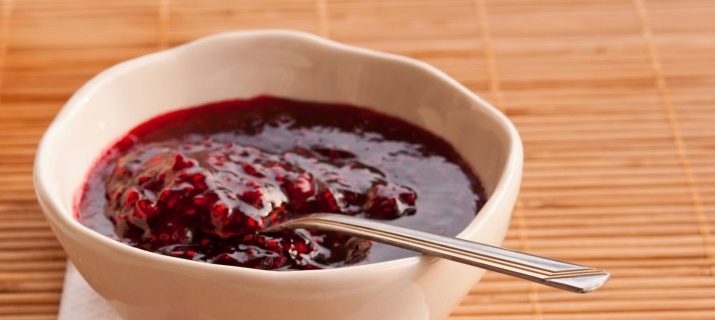Apples "White filling": description of the variety, cultivation and care
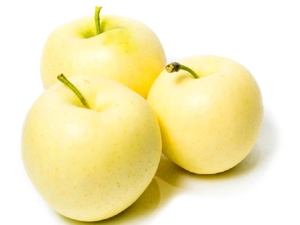
In Russia, there is a special respect for apples.Fruits contain a huge amount of beneficial trace elements and taste great. Most varieties appear in the month of September. White filling stands alone, it is valued for the original taste and high yield.
Variety description
In recent years, numerous “improved” hybrids have appeared, the progenitor of which is the Bely apple filling tree. The old variety is still cherished by agrarians and is very popular. It resists well to negative temperatures, unpretentious, has a high yield.
The tree can be no more than five meters high. Apple crown White filling grayish-light, is usually of medium size. The shape is more often pyramidal about 4.5 meters in diameter; in some cases, its diameter may be about seven meters.
When a period of maturity begins (after seven years of development), the crown becomes a less pronounced pyramidal configuration, it is more like a sphere.
The development of the roots depends largely on the stock. Power-growing apple trees have a strong central core, short-growing ones do without a main central stem. The yield from each tree can reach about two hundred kilograms at the age of 6 to 12 years.
Apple need timely feeding and watering. Also, to keep a high yield a little longer, Be sure to thin out the crown and inflorescences.
Pollinating a plant occurs in a cross way. White filling requires "neighbors" - there must be other apples nearby. The optimal layout is when both the middle and early plant varieties are located nearby. Apple tree is very well pollinated, its flowering looks aesthetically attractive.
White filling is very popular among gardeners, this variety is known to almost everyone.
In the general register there are also duplicate names of White Filling.
Differentiation in the names appeared because the variety was cultivated in various regions from Samara to Tula. The first mention of the variety appeared in 1849, it is the result of collective breeding developments. In the regions that are located closer to Poland, this variety is called Papirovka. With the participation of White Naliva bred more than two dozen varieties of apples.
When do apples ripen?
Apples are spiced up very early. Often, in early August in the central part of Russia you can harvest. In the Kuban, Bely pouring ripen even earlier - in the second half of July. Fruiting takes place only on kolchatka. The bloom is very beautiful: white and pink flowers envelop the whole tree, emit a fragrant aroma. White filling fruits apples that weigh 130-160 grams. Old trees do not give apples weighing more than 70 grams.
Apples are attached not very firmly, they are conical in shape with the presence of a small ribbing. The skin of the fruit is light, almost white with a slight greenish tint, sometimes on apples there is a small pink blush. The ripe fruits of the White filling even look somehow unnatural, as if they are made of papier-mâché or porcelain.
Characteristics and properties of fruits
White filling is often confused with Papirovka, although there are significant differences between them. Papiroka - secondary, in fact, is a derivative of the White Filling. Paping is not so resistant to cold weather, apples are noticeably sour and not so tasty.
Papion matures a week earlier and has a characteristic "seam" on its side. This variety of apples produces especially tasty jams and preserves.
Fruits should not be overripe, otherwise they become loose, while the taste is largely lost.
The disadvantages of the fruit include the following:
- they cannot be transported over long distances;
- fruits have a thin peel, extremely sensitive to the most insignificant mechanical loads;
- such fruits can lie no more than ten days, they quickly deteriorate. In large volumes, growing White is unprofitable, from a commercial point of view.
In the White filling a huge amount of vitamin C, which helps to increase the tone and strengthen the immune system. Fiber actively helps to remove from the tissues various toxins that appear during metabolism, strengthens the heart muscle and the elasticity of the walls of blood vessels. Useful substances are also a good preventive measure against the occurrence of diseases such as:
- oncology of the digestive tract;
- liver diseases.
The peel of White filling contains a rare and extremely useful substance - quercetin. This component suppresses the action of free radicals. Which often provoke the occurrence of cancer. In apples, a lot of pectin, which promote the regeneration of liver cells, stimulating its productive work. The fruits of the White filling themselves have a rich juicy taste; Sliced apples are often added to a wide variety of salads.
At home, a bountiful harvest comes in a couple of weeks, then the apples spoil quickly; At this time, the harvest of product canning begins.
Apples White filling in the form of jams and compotes retain their useful qualities. Very tasty from the White filling turns out candy and pastries.
Calories per 100 grams:
- Protein - 0.43 g 0%;
- Fat - 0.43 g 0%;
- Carbohydrates - 9.86 g 2%;
- Calories - 46.73.
It is recommended to eat raw apples in diabetes, the product contains a significant amount of carbohydrates
Planting and care
Apple trees begin to bear fruit already in the fifth year of their life; a tree can produce up to two quintals of selected apples. As pollinators are most often used:
- lungwort;
- aftermath;
- pear;
- mantet
The plant is recommended to plant in areas that are well lit and protected from the north wind. The variety suffers from moth and white scab, but has good resistance to negative temperatures. Despite the poor keeping quality, the Belyi variety is in great demand, especially in the Moscow region, Chernozem regions and in the Urals.
In the southern regions of the country, this variety of apple trees is planted in early autumn, in the more northern areas they prefer to plant in spring.
If the apple tree grows near the fence or at home, then it is recommended to observe a distance of approximately 2.7 meters. In the lowlands and swampy places such an apple tree will not grow. If the soil is too clay, then it is recommended to pour artificial sand; soil acidity should be pH 6–6,6, i.e. neutral or slightly acidic. If the tree is too sprawling, then the landing pattern is usually 4.1 x 5.1 meters. Pit digging depth of about a meter, the diameter is also about a meter. If the soil is too clayy, drainage should be laid at the bottom of the pit. Additives to the pit when planting a tree:
- peat;
- humus;
- chernozem.
All components are assembled in approximately the same proportion. There are additives from a mixture of superphosphate (350 gr.) And 3.5 liters of wood ash. White filling must be periodically thinned out, otherwise ideal conditions arise for the appearance of fungus and other pests. A crown shape that resembles a bowl is the perfect configuration. According to the degree of difficulty with the formation of the crown, even farmers can cope with minimal work experience.
After two years of development of the plant, four branches of the tree are selected that will be carriers, between them there should be about twenty centimeters. Branches are trimmed to thirty percent.
The following year, branches of the next level are formed, and it should be controlled so that they are directed inside the crown.
It should regularly do preventive treatment - remove dry branches, thin out the crown. The shape in the form of a cup provides good irradiation of the leaves, dramatically reduces the possibility of mites and aphids.
Should remember that White filling capricious in terms of life-sustaining moisture. The soil near the trunk of the tree should be constantly a little wet, however, it is necessary to observe the measure: waterlogging, waterlogging of the soil is also unacceptable.It is necessary to pay attention to the weather and precipitation, but on average, during the warm season, thorough watering of apple trees is done up to ten times. For three years, the root system of a young tree takes root thoroughly, so the frequency of watering can then be reduced by half.
It is easy to care for the White bulk, the time when feeding is made do not bear any special requirements, being standard. Organic and compost is added every three seasons in spring. The amount needed is on average no more than seven kilograms per square meter. At the same time, 35 g of urea is added. per square meter, it can be replaced with urea.
Also at intervals of two to three weeks add a solution of potassium monophosphate (15 g. Per m2). After fruiting in the autumn, 35 gr. per m2 of superphosphate.
In the warm season, during the flowering period, it is also possible to periodically add a solution of manure, chicken droppings.
It is necessary to take into account the fact that Bely pouring is prone to some parasites. Preventive measures are needed here. Be sure to clean the trunks of trees and whiten them; on the shtamb fixed trapping belt. White suffers most from scab, he has no immunity against this scourge. Scab appears during wet weather.
It is also likely to appear when the crowns are not thinned out. The first symptoms are easy to notice: the upper leaves are covered with bright dark green spots. Very quickly they become dirty brown and brown. The leaves fall, the apples are also covered with brown spots, the flesh of the fruit becomes shriveled and cracks.
If you start the disease, there will be no harvest. It should be as a prophylaxis to treat apples with such compounds:
- Fitosporin-M;
- Fitolavin;
- "Gamair".
Processing of trees continues throughout the warm season. Bordeaux liquid (concentration of 3%) can also be used effectively. After completion of the flowering period, apple trees are sprayed with such substances:
- "Fast";
- Chorus;
- "Kvadris".
If the infection on the plant progresses, then on average every one and a half week it is necessary to process the foliage of trees a couple more times.
Another dangerous disease for Bely Beer is powdery mildew. It appears in April and covers the young foliage and flowers. It is simple to learn mealy dew, foliage and inflorescences become covered with a dirty gray scurf. In June and July, the affected places dry up.
The apples themselves are also affected, they become powdery, the flesh is covered with a rust-colored cobweb. In the fight against this disease uses the same chemicals as in the elimination of scab. You should also take note and use the following composition: colloidal sulfur, which is added to the solution with fungicides. Cooked lime decoction with added sulfur is also effective. If there is a whitish coating on the leaves, then these are the “first swallows” - symptoms of powdery mildew. More formulations to combat powdery mildew:
- 1% solution of DNOC;
- 3% nitrafen.
These compounds kill any pests. Also, after the young leaves have appeared, you can use powerful insecticides:
- "Malathion";
- "Phosphamide";
- "Fufanon";
- "Mospilan";
- "Decis".
Another extremely dangerous "predator" for Bely poured apple trees is the moth.
After flowering, insects begin to lay eggs, the caterpillars subsequently eat the fruit. Losses can be very large (up to 90% yield), if you do not carry out preventive measures. It is necessary to use pollinators, in particular, insecticides; do it every two weeks, then with a break of two weeks you need to do at least two more treatments.
Aphid is a terrible enemy who has good resistance to chemicals. In one season, 15-20 generations of this “amazing” creation are possible. After the young leaves have appeared, they should be sprayed with insecticides.
There are years when aphids reproduce particularly rapidly, huge colonies of this parasite are formed - in this case chemical treatment of tree crowns should be repeated.
Apple bloom eater also "loves" White filling. The larvae of this pest bite into the buds and destroy them, after three weeks there are bugs that leave the “home” - destroyed inflorescences. When foliage develops, apple trees should be treated with insecticides. It is recommended to regulate the yield, removing the excess ovary due to spring pruning. Potash and phosphate fertilizers are most needed, it is necessary to observe the dosage with nitrogen compounds. A four-year-old tree requires:
- no more than ten kg of "organic";
- 15 gr. sodium chloride;
- 14 gr. superphosphate;
- 10 gr. urea or ammonium nitrate.
A good apple harvest can be obtained by adding macro- and microelements, including wood ash, in reasonable proportions, during the warm season. Nitrogen compounds in the summer is better not to use.
Original recipes
From the white filling can cook a variety of dishes. To do this, you will need apples and sugar, in a ratio of not more than one to two. Apples are washed in water, freed from seeds, cut into small cubes. Should be taken fruits that are not deformed and there are no dents on them. Sliced apples are placed in a container, sugar is added to it; defend them 4-6 hours. During this period of time, apples secrete juice. Then the dish is placed on the stove and simmering on low heat for about twenty minutes. After that, the finished product is packaged in banks, sealed with lids.
You can cook another dish. This will require:
- 50 gr. salts;
- sugar - 1.2 kg;
- soda - 50 g .;
- seasonings (vanilla, cinnamon, turmeric).
Peel on the fruit can be left. To keep the apple slices dark, it is recommended to put them in a vessel in which salt solution is present (one teaspoon per 1 liter of water).
Then the apples are removed, washed in running water, dried, then put in soda solution. Such manipulations make it possible to consolidate the original form. Then all the content is poured into a large container, which is filled with granulated sugar. Then it is put on a slow fire and boils no more than ten minutes. After the tank is placed in a dry dark place and cools down for four hours. Apple slices are soaked with a sweet substance and become transparent. Then the operation is repeated and this time the capacity is left for 12 hours.
Then they do all these manipulations again. The resulting dish is distributed to the banks (necessarily sterilized). Then everything is repeated the last time, lemon and seasonings are added to the product. Finally, another “approach” is made, after which seasoning and citric acid are added to the contents. Food is distributed in containers that are sealed. The finished jam is poured into sterilized jars, rolled up, put in the basement.
Such jam is very popular: apples and raspberries. To make it, you will need a roomy container. One pan will be needed for the berries, the second will be needed to prepare the mixture. There is a freedom of choice in the choice of quantity and proportions of ingredients. As a recommendation, it can be suggested that the ratio of raspberries and apples should be approximately 2: 1. The proportions of the mixture and sugar are taken 1: 1.
Prepared fruits are poured with sugar, the container is settled (24 hours), the contents are soaked with syrup. Then the mixture is put on the fire and boiled for about thirty minutes. Then the content will need to stand and cool. Then the whole cycle repeats. The output is very tasty jam, where the pieces of apples will be present in equal segments.
Gardeners reviews
Farmers' reviews of apples Bely filling predominate mostly positive. The product has a great taste that captivates, distracting from some of the shortcomings.The variety is unpretentious and has excellent yield, properly grown apple care requires little.
See the following video for tips on caring for an apple tree.

